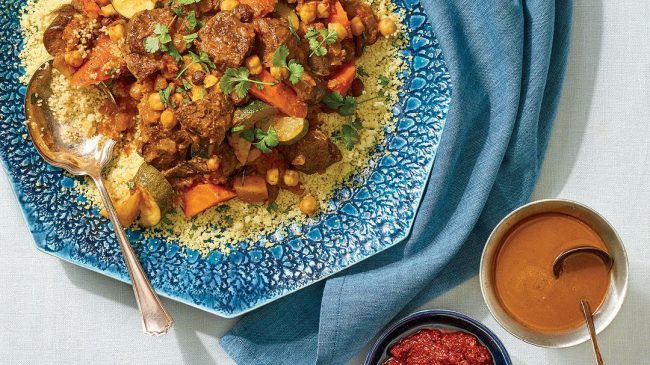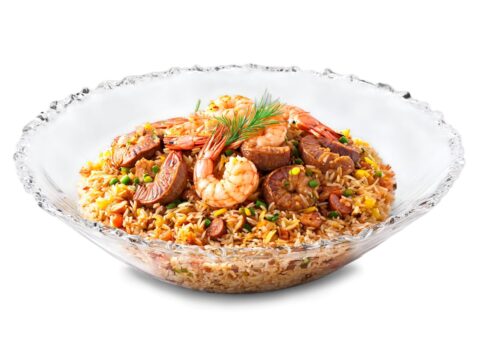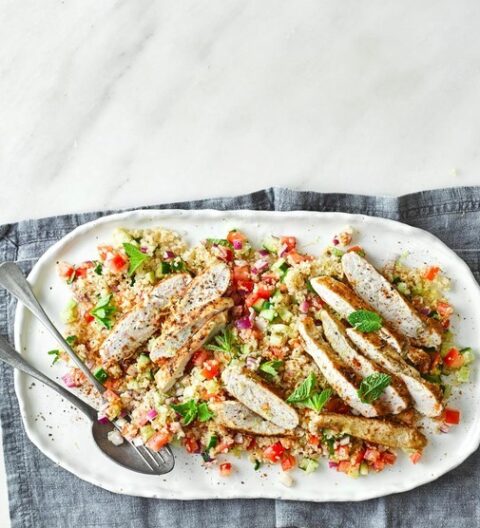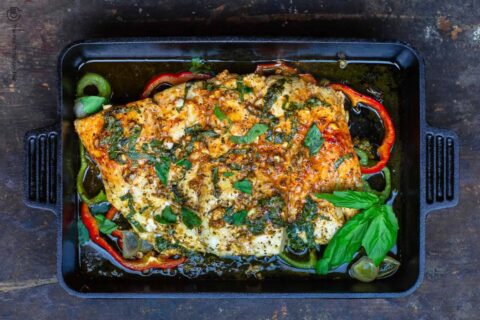
A traditional Moroccan dish combining best olive oil with couscous for a heart healthy diet
Updated July 12th 2023
Morocco Gold Extra Virgin Olive Oil Meets Traditional Moroccan Cuisine
Moroccan extra virgin olive oil has emerged as a rising star in the world of healthy eating and Morocco Gold extra virgin olive oil represents the very best olive oil around. With its unique flavor and rich nutritive profile, this olive oil has been gaining popularity among health-conscious consumers.
Known for its low acidity levels, the extra virgin olive oil from Morocco is packed with essential nutrients, including monounsaturated fatty acids, antioxidants, vitamin E, and minerals like potassium and calcium. Moroccan producers also follow strict sustainable farming practices, ensuring that the olives are grown without the use of harmful pesticides or chemicals.
As consumers become more aware of the importance of healthy eating, Moroccan extra virgin olive oil is quickly becoming a top choice for those seeking to improve their health and wellbeing. So here is a way of combining this best olive oil with a traditional and healthy Moroccan staple.
Moroccan Lamb Couscous With Extra Virgin Olive Oil
Moroccan couscous is prepared in most Moroccan households every Friday, to be eaten after Friday prayers. Families unite around the huge couscous dish once a week and enjoy the taste of tradition.
As with most traditional Moroccan recipes, the methods of preparation and ingredients differ from region to region, and from family to family. In the southeast of Morocco, Amazigh people prepare couscous with kale which is abundantly available in this region. In the spring and summer months, rural communities cultivate kale and use it as a key ingredient for their Friday couscous. In winter, it is the fava bean season and many families choose to include the bean as the special ingredient for their couscous. In the atlas region, women prepare couscous with pumpkin and zucchini and adding milk to the gravy before serving.
Ingredients
- 500 g of medium couscous
- 1 kg of lamb meat
- 4 carrots, peeled cut lengthwise
- 3 turnips, peeled and cut lengthwise
- 250g of fava beans, peeled
- 2 medium squares of pumpkin
- Some roughly chopped cabbage
- 2 zucchinis
- 1 cup of chickpeas, tinned or soaked overnight
- 2 tomatoes, grated
- 1 onion, chopped
- 1 tablespoon of chopped cilantro and parsley
- 1 tablespoon of butter
- 1 teaspoon of black pepper, turmeric, salt, ginger
- Pinch of saffron threads
- ½ cup of Morocco Gold extra virgin olive oil
- Enough water (about 3 litres)
Instructions
- In the couscous pot, put oil and onion, meat and cook for 5 minutes on a medium heat. Add grated tomatoes and chopped parsley and cilantro, stir, and let cook for another 5 minutes.
- Add some grated pumpkin to give the gravy a good taste and make it thick. Add vegetables, spices, and water to cover the vegetables. (Zucchini and pumpkin may be added later since they don’t take a long time to be cooked).
- Leave the pot on medium heat until boiling.
- Meanwhile, you can start preparing your couscous: Place couscous in large plate or using a Gasaa (Moroccan couscous plate), sprinkle with 1/4 litre of water and separate the grains by gently rubbing them between and add two tablespoons of oil extra virgin olive oil.
- Place couscous inside the steamer and put it on the boiling couscous pot. The steam will rise from the couscous.
- Let couscous steam for 15 minutes and remove it into a large bowl. Separate the grains again by rubbing them gently between your palms or with fork while.
- Sprinkle some cold water, separate the grains.
- Return the couscous in the steamer to steam again for about 45 minutes.
- Decant the couscous into the large bowl and sprinkle some cold water, for the last time, and gently break all the lumps with a fork and let rest for 10 minutes.
- Add 2 tablespoon of oil extra virgin olive oil, butter, and a pinch of salt to the couscous and mix well.
- Replace the couscous in the steamer and put it on the pot. Steam until the steam rise from the top for 5 minutes.
- The couscous is ready. Now tip couscous onto a large dish or Gasaa, add the meat in the middle, then place the vegetables decoratively on top of the couscous.
- Add sauce till it is soaked enough.
- Serve
Morocco Gold Extra Virgin Olive Oil & Couscous
Couscous is a delicious, versatile grain that is popular in many Mediterranean dishes. However, couscous can also be a healthy addition to your diet. One of the best ways to enjoy the health benefits of couscous is to cook it with extra virgin olive oil. Extra virgin olive oil is the highest quality olive oil and is rich in antioxidants and healthy fats. Studies have shown that consuming extra virgin olive oil can help to lower cholesterol levels, reduce inflammation, and even prevent certain types of cancer. In addition, extra virgin olive oil can add a delicious flavour to couscous. When cooked with extra virgin olive oil, couscous provides a healthy, flavourful option for any meal.
Couscous is a staple in North African cooking however this versatile ingredient can also be used as a non-traditional side dish in many classic recipes. Couscous is a tiny pasta made of wheat or barley. Although couscous was traditionally hand-rolled, these days it’s made by machine: Coarsely-ground durum wheat (semolina) is moistened and tossed with fine wheat flour until it forms tiny, round balls.
Most of the couscous available in the UK and North America is “instant” or quick-cooking. In Morocco, Algeria, and Tunisia, couscous is steamed over a simmered stew after being tossed with a little water or oil and water.
There are three main types of couscous you’ll see: Moroccan couscous, Israeli couscous and Lebanese couscous. Moroccan couscous is the smallest, about the size of semolina and cooks in minutes.
Is Couscous Healthy?
Just one cup of couscous contains over half your daily recommended intake of selenium, a powerful antioxidant that helps fight inflammation and bad LDL cholesterol levels in the body. Couscous is also a good source of fibre, with one cup supplying almost 10 percent of your daily recommended intake, but you’ll want to make sure you’re pairing it with plenty of other fibre-rich foods as well. To get the most bang for your buck nutritionally, opt for whole-wheat couscous.
Another lovely couscous recipe is “tefaya,” it is decorated with honey onions and raisins. While it is usually served as at ceremonies and parties, many families choose to cook this type of couscous every Friday.



